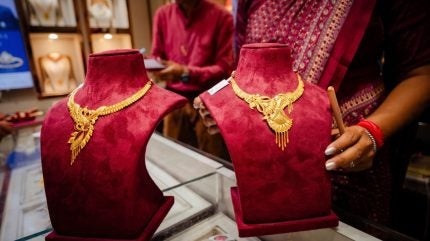
India’s retail industry witnessed its highest-ever festive season performance between Navratri and Diwali 2025, with total trade reaching Rs5.4tn ($61.5bn) in goods and Rs650bn in services, according to a nationwide survey by the Confederation of All India Traders (CAIT).
As reported by the Times of India, the CAIT Research and Trade Development Society carried out the survey across 60 key distribution hubs in Tier 1, Tier 2 and Tier 3 cities between 29 September and 20 October.

Discover B2B Marketing That Performs
Combine business intelligence and editorial excellence to reach engaged professionals across 36 leading media platforms.
Overall trade turnover rose by 25% compared with 2024, and 72% of traders reported higher sales.
CAIT links the increase to reduced goods and services tax (GST) rates on categories such as confectionery, home décor, footwear, ready-made garments, consumer durables and daily-use items.
The organisation also highlights the impact of the national government’s Vocal for Local initiative and a stronger consumer preference for Indian-made goods.
87% of consumers chose domestically produced goods, resulting in a noticeable fall in demand for Chinese imports.

US Tariffs are shifting - will you react or anticipate?
Don’t let policy changes catch you off guard. Stay proactive with real-time data and expert analysis.
By GlobalDataFestive sales surpassed the Rs4.25tn recorded in 2024, with contributions from both large cities and smaller towns.
Sales of Indian manufacturers grew more than 25%, while traditional retail stores accounted for 85% of overall trade.
Gold and jewellery made up 10% of total sales, followed by grocery and FMCG at 12%, electronics at 8% and consumer durables at 7%.
In the services sector — comprising logistics, hospitality, travel and packaging —business activity amounted to Rs650bn, creating five million temporary jobs.
Rural and semi-urban areas contributed close to 28% of total sales, indicating expanding demand beyond metropolitan regions.
The Trader Confidence Index rose to 8.6 in 2025 from 7.8 the previous year, while the Consumer Confidence Index stood at 8.4, supported by stable prices, moderate inflation and GST rationalisation.
The organisation estimated that purchases of gold and silver on Dhanteras [the first of the Diwali festival] reached Rs200bn and Rs25bn, respectively.
CAIT states that the 2025 festive season set a new benchmark for India’s retail economy, driven by close to 90 million small traders and local manufacturers.
Despite the ongoing rise of e-commerce, offline retail continued to dominate festive trade due to strong consumer turnout and immediate product availability.
CAIT called on authorities to ensure fair competition amid growing online activity.
With shopping expected to continue through Bhai Dooj [the festival that marks the end of the Diwali period] and the 2025 wedding season, retailers anticipate sustained demand, supported by an estimated 4.8 million weddings projected to generate an additional Rs6tn in trade.





